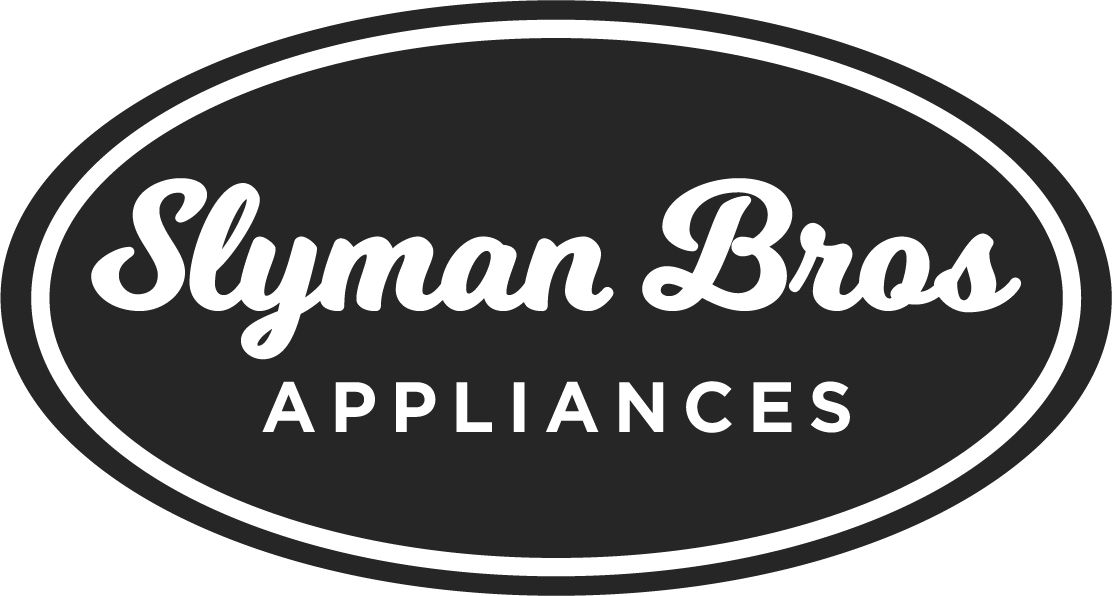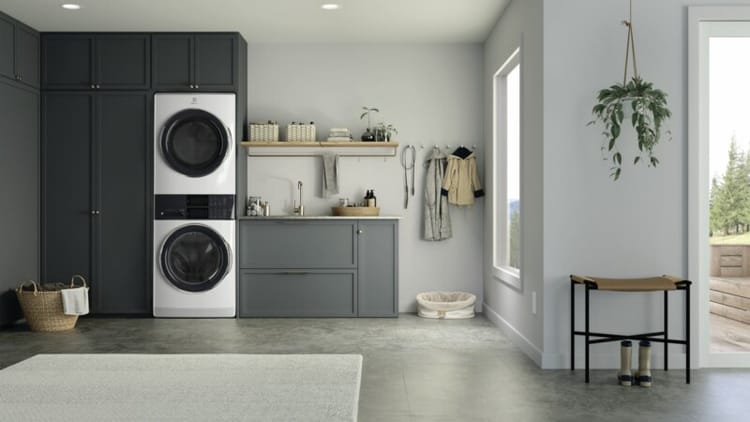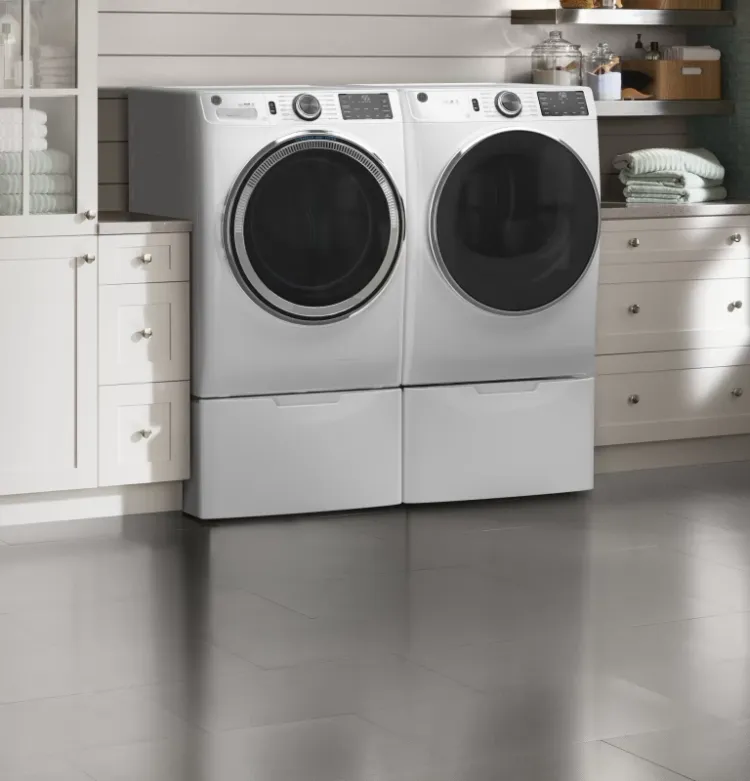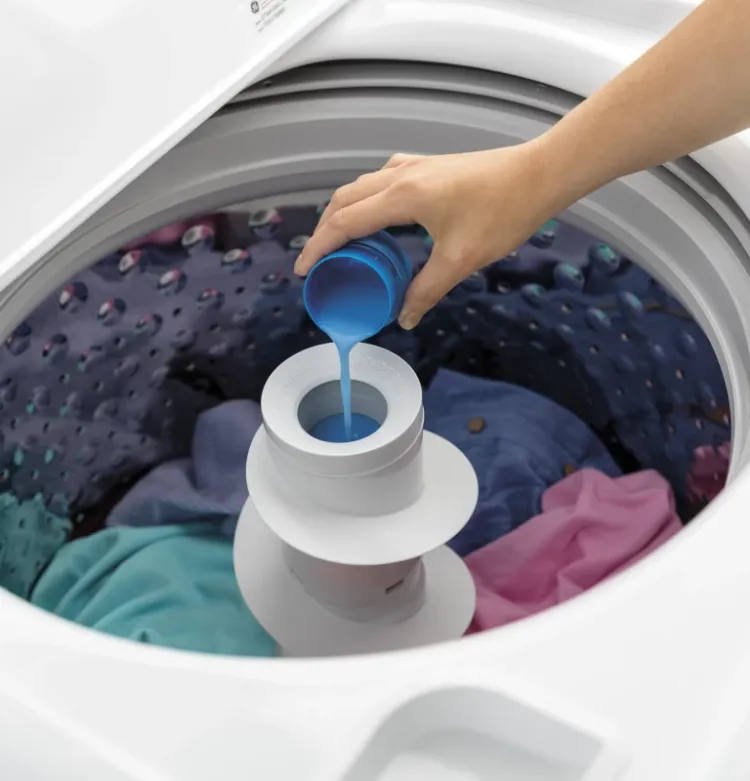A Guide to Choosing Between a Front Load and Top Load Washer for Your Home
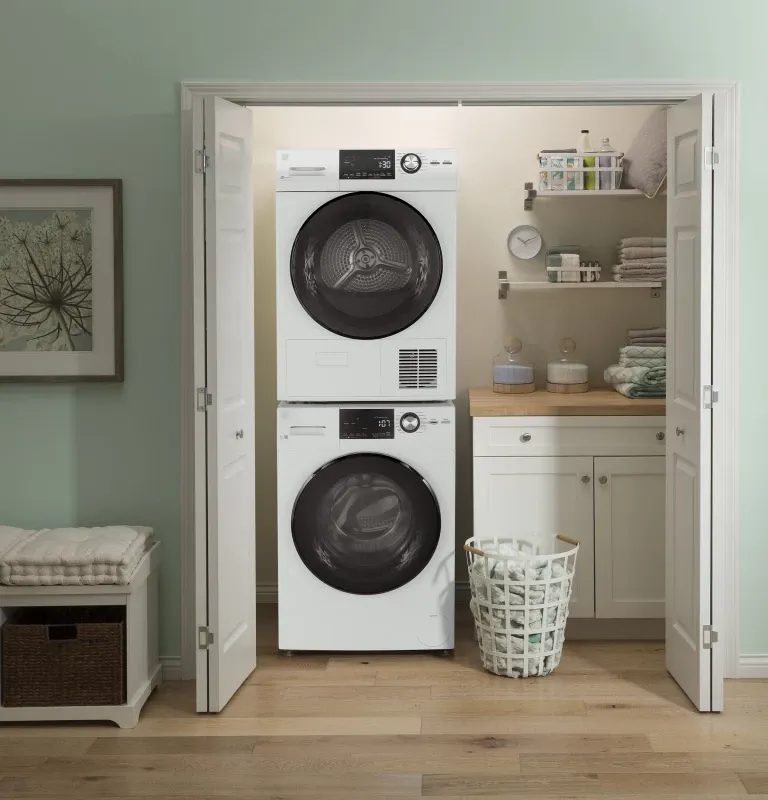
Are you standing in the appliance aisle, scratching your head over whether to choose a front load or top load washer? You're not alone! This decision can feel overwhelming, but don't worry – we're here to help you navigate the world of washing machines with ease. Whether you're replacing an old faithful or equipping your new home, understanding the differences between front load vs top load washers is crucial for making the right choice for your household.
Both types of washers have their unique strengths and potential drawbacks. Your perfect match depends on various factors, including your laundry habits, space constraints, and even your budget. In this guide, we'll break down everything you need to know about front load and top load washers, helping you make an informed decision that'll keep your clothes clean and your home running smoothly for years to come.
Design Overview: How Top Load and Front Load Washers Work
Let's start with the basics: as their names suggest, top load washers open from the top, while front load washers have a door on the front. But the differences go far beyond just where you put your clothes in.
Top load washers come in two main varieties: those with agitators and those with impellers. An agitator is a central column with fins that creates a familiar swishing action, moving clothes through the water. Impeller models, on the other hand, use a low-profile disc at the bottom of the tub to create currents that move the clothes. Both types rely on filling the tub with water and using motion to clean your laundry.
Front load washing machines take a different approach. They use a tumbling action, similar to how clothes dryers work. The drum rotates, gently lifting and dropping clothes through a small amount of water at the bottom. This motion creates a kind of wash-and-tumble effect that can be highly effective at cleaning clothes.
These fundamental design differences impact everything from cleaning performance to energy efficiency, which we'll explore in more detail throughout this guide. Understanding how each type works is the first step in deciding which will best meet your laundry needs.
Which Washer Cleans Better?
When it comes to cleaning power, both front load and top load washers can effectively clean your clothes, but they each have their own strengths. Let's break it down:
Front Load Washers
- Generally offer a more thorough and gentler clean
- The tumbling action is especially effective at removing tough stains
- Kinder to fabrics, making them great for delicate items
- Use less water, which can actually improve cleaning by concentrating detergent
Top Load Washers
- Agitator models are known for cleaning heavily soiled items quickly
- The vigorous motion is great for work clothes or sports gear
- Impeller models offer a middle ground, providing a gentler wash than agitator models while maintaining the convenience of top-loading
It's worth noting that front load washers typically score higher in independent cleaning tests. The tumbling action allows clothes to drop into the water and detergent mixture repeatedly, providing a consistent clean throughout the load. This action is particularly effective for removing ground-in dirt and stains.
However, top load washers, especially those with agitators, can be more effective at handling bulky items like comforters or sleeping bags. The central agitator can help move these large items through the water more effectively.
Ultimately, both types can get your clothes clean. Your choice might come down to the types of laundry you do most often. If you frequently wash delicates or are particularly concerned about clothes wear, a front loader might be your best bet. If you often deal with heavily soiled items and prefer shorter wash cycles, a top loader could be the way to go.
Energy and Water Usage: What to Expect
When it comes to efficiency, there's a clear winner in the front load vs top load washer debate. Let's break down the differences:
Front Load Washers
- Use significantly less water per load
- More energy-efficient overall
- Typically use 20-50% less water and 30-50% less energy than top loaders
- Spin cycles are usually more effective, leaving clothes dryer and reducing dryer time
Top Load Washers
- Traditionally use more water, especially models with agitators
- Newer high-efficiency (HE) top loaders have improved, but still generally use more water than front loaders
- Shorter cycle times can somewhat offset higher water usage in terms of energy consumption
The efficiency advantage of front load washers stems from their design. They only need to fill with enough water to cover the bottom of the drum, as the tumbling action lifts clothes into the water. Top loaders, on the other hand, typically need to fill the tub to cover all the clothes.
This efficiency translates directly to your utility bills. While front load washers often have a higher upfront cost, the savings on water and energy can add up significantly over time. For example, ENERGY STAR certified washers (which are often front loaders) can save about 33,000 gallons of water over their lifetime.
However, it's worth noting that newer high-efficiency top load washers have made great strides in reducing water and energy usage. While they may not match the efficiency of front loaders, they offer a notable improvement over traditional top load models.
Ultimately, if minimizing your environmental impact and reducing utility bills are top priorities, a front load washer is likely your best choice. But if you prefer the top load design, look for high-efficiency models to help mitigate the efficiency gap.
User Experience: Accessibility and Convenience
When it comes to day-to-day use, both front load and top load washers have their unique advantages. Let's explore the user experience of each:
Top Load Washers
- Easier to load and unload, especially for those with back problems or limited mobility
- Allow you to add clothes mid-cycle in most models
- Typically have shorter cycle times
- Some users find them more intuitive to use, especially if transitioning from an older top load model
Front Load Washers
- Can be stacked with a matching dryer, saving valuable floor space
- The door can serve as a convenient shelf for folding clothes or staging the next load
- Often have larger capacity despite similar external dimensions
- Usually offer more advanced features and wash cycles
One of the biggest advantages of top load washers is their accessibility. There's no need to bend down to load or unload laundry, which can be a significant benefit for users with mobility issues or those who do multiple loads a day. The ability to add forgotten items mid-cycle is also a convenient feature that most front loaders lack.
Front load washers, while requiring more bending to access, offer unique benefits in terms of space-saving and capacity. Their ability to be stacked with a dryer makes them ideal for small laundry rooms or closet installations. Many users also appreciate the visibility provided by the front door, allowing them to monitor the wash cycle progress.
When it comes to cycle duration, top loaders typically have an edge. Their design allows for shorter wash times, which can be a significant advantage for households that run multiple loads per day. However, front loaders often make up for longer wash times with shorter drying times, thanks to their more effective spin cycles.
It's worth noting that both types of washers have seen improvements in user-friendly features in recent years. Many now offer smart connectivity, allowing you to control and monitor your washer from your smartphone. Additionally, some newer front load models have introduced features to address common complaints, such as small doors within the main door to allow for adding items mid-cycle.
Ultimately, the choice between a front load vs top load washer in terms of user experience often comes down to personal preference and your specific needs. Consider your laundry habits, physical capabilities, and space constraints when making your decision.
Maintenance and Longevity: Which Lasts Longer?
When investing in a new washer, it's important to consider not just the initial purchase, but also the long-term maintenance and durability. Let's compare front load and top load washers in these aspects:
Top Load Washers
- Generally easier to maintain
- Less prone to mold and mildew issues
- Simpler mechanical design, which can mean easier and potentially less expensive repairs
- Agitator models may cause more wear on clothes over time
Front Load Washers
- Require more regular maintenance to prevent mold and odor issues
- Often have more advanced features, which can mean more complex (and potentially more expensive) repairs
- Typically gentler on clothes, potentially extending the life of your garments
- Many newer models have self-cleaning cycles and features to combat mold issues
One of the most common concerns with front load washers is the potential for mold and mildew growth around the door seal. This is due to water that can collect in this area after a wash cycle. To prevent this, it's important to wipe down the seal after each use and leave the door open when not in use. Many newer front load models have features designed to combat this issue, such as vents to circulate air or antimicrobial door seals.
Top load washers, particularly those without agitators, are generally easier to maintain. They're less likely to develop mold or odor problems, and many people find them the simpler type of washing machine to clean. However, models with agitators may need occasional cleaning around the central column.
When it comes to longevity, both types can last for many years with proper care. The lifespan of a washer depends more on factors like build quality, usage patterns, and maintenance than on whether it's a front loader or top loader. However, it's worth noting that front loaders often have more advanced features and may require more specialized repairs, which could impact long-term costs.
In terms of clothing wear, front load washers typically have an advantage. Their tumbling action is gentler on fabrics compared to the twisting motion of an agitator in a top loader. This could mean your clothes last longer, which is an indirect benefit to the washer's value over time.
Space and Layout: Which Washer Fits Better in Your Home?
When choosing between a front load vs top load washer, it's crucial to consider your laundry space and home layout. The right choice can maximize your available space and improve your laundry room's functionality. Let's compare how each type fits into different home setups:
Front Load Washers
- Can be stacked with a matching dryer, ideal for small spaces or closet installations
- Require space in front for the door to swing open
- Often have slightly larger capacities despite similar external dimensions
- Some models offer reversible doors for flexible installation
Top Load Washers
- Cannot be stacked, requiring side-by-side installation with a dryer
- Need space above for the lid to open fully
- Better for rooms with limited depth but more width
- Typically easier to install and move due to their design
One of the biggest advantages of front load washers is their stackability. If you have a small laundry room or are working with a closet space, a stacked washer and dryer combo can be a game-changer. This vertical configuration can free up valuable floor space, allowing for additional storage or work areas in your laundry room.
However, front loaders do require some clearance in front of the machine for the door to open fully. If your laundry area is in a narrow hallway or a tight space, this could be a consideration. Some newer models offer reversible doors, which can provide more flexibility in tight spaces.
Top load washers, while not stackable, can be a better fit for rooms with limited vertical clearance. They're ideal for installations under countertops or in rooms with low ceilings. They also don't require extra space in front for a door to swing open, which can be advantageous in tight spaces.
When it comes to capacity, front load washers often have a slight edge. Despite similar external dimensions, their drum design allows for larger load sizes. This could mean fewer loads and less time spent doing laundry, which is worth considering if you have a large household.
Installation is another factor to consider. Top load washers are generally easier to install and move, as they don't require the careful leveling that front loaders do. This can be particularly important if you anticipate needing to move your washer in the future.
Ultimately, the best choice depends on your specific space constraints and laundry needs. Measure your laundry area carefully, considering not just the space the machines will occupy, but also the clearance needed for doors, lids, and comfortable loading and unloading. If you're remodeling or building a new home, you have the opportunity to design your laundry space around your preferred washer type, maximizing efficiency and convenience.
Price Comparison: What's the Best Value for Your Budget?
When shopping for a new washer, it's important to consider not just the upfront cost, but also the long-term value. Let's break down the financial aspects of front load vs top load washers:
Initial Cost
- Top Load Washers: Generally have a lower purchase price, especially for basic models
- Front Load Washers: Typically more expensive upfront, particularly for models with advanced features
Operating Costs
- Top Load Washers: Usually have higher water and energy costs, especially older or non-HE models
- Front Load Washers: More energy-efficient, leading to lower utility bills over time
Long-Term Considerations
- Repair Costs: Front loaders may have more complex repairs due to advanced features
- Lifespan: Both types can last 10-15 years with proper maintenance
- Impact on Clothing: Front loaders' gentler wash action may help clothes last longer
At first glance, top load washers often seem more budget-friendly due to their lower initial cost. You can find basic top load models at very competitive prices, making them attractive for tight budgets or temporary living situations.
However, front load washers shine when it comes to long-term savings. Their superior energy and water efficiency can lead to significant reductions in utility bills. According to ENERGY STAR, a certified clothes washer (which is often a front loader) can save about $380 in energy costs over its lifetime compared to a standard model. This efficiency can help offset the higher purchase price over time.
When evaluating washer and dryer energy ratings, front loaders usually come out on top. Their efficiency can translate to lower operating costs, potentially making them more economical in the long run despite the higher upfront investment.
It's also worth considering the impact on your clothing. Front loaders' gentler washing action may help extend the life of your garments, potentially saving money on clothing replacement over time. This is particularly relevant if you frequently wash delicate or expensive items.
Repair and maintenance costs can vary. While front loaders may have more complex (and potentially more expensive) repairs due to their advanced features, they may require fewer repairs overall if properly maintained. Top loaders, with their simpler design, often have less expensive repairs but may need them more frequently, especially in models with agitators.
Ultimately, the best value depends on your specific situation. If you're on a tight budget or don't plan to stay in your current home long-term, a top loader might be the more practical choice. However, if you're looking for long-term savings and have the budget for the initial investment, a front loader could provide better value over time.
Remember to look beyond the price tag and consider factors like energy efficiency, water usage, capacity, and features that match your laundry needs. Sometimes, spending a bit more upfront can lead to significant savings and satisfaction in the long run.
Final Thoughts: Making Your Decision
Choosing between a front load and top load washer ultimately comes down to your specific needs, preferences, and home setup. Let's recap the key points to consider:
- Cleaning Performance: Front loaders generally offer more thorough and gentler cleaning, while top loaders excel at handling heavily soiled items quickly.
- Efficiency: Front load washers are typically more water and energy-efficient, potentially leading to long-term savings on utility bills.
- User Experience: Top loaders offer easier accessibility and the ability to add clothes mid-cycle, while front loaders provide space-saving stackability and often larger capacities.
- Maintenance: Top loaders are generally easier to maintain, while front loaders require more attention to prevent mold and odor issues.
- Space Considerations: Front loaders can be stacked to save space, while top loaders might be better for rooms with low ceilings or limited depth.
- Cost: Top loaders often have a lower upfront cost, but front loaders can offer better long-term value through efficiency savings.
Remember, there's no one-size-fits-all solution. The best washer for you is the one that fits your lifestyle, space, and budget. Consider your laundry habits, the types of items you wash most frequently, your physical needs, and your home's layout when making your decision.
When you're ready to make your choice, consider shopping at Slyman Bros for your next washer. As the leading appliance store in the St. Louis Metro area, Slyman Bros offers a wide selection of both front load and top load washers to suit every need. Their expert staff can help you navigate the options and find the perfect washer for your home.
Slyman Bros proudly serves customers all over the St. Louis Metro area, bringing their extensive knowledge and top-notch service to households across the region. With their commitment to customer satisfaction and wide range of high-quality appliances, you can trust Slyman Bros to help you find the ideal washer that will keep your clothes clean and your household running smoothly for years to come.
Whether you choose a front loader or a top loader, modern washers offer impressive cleaning power and features to make laundry day a breeze.
